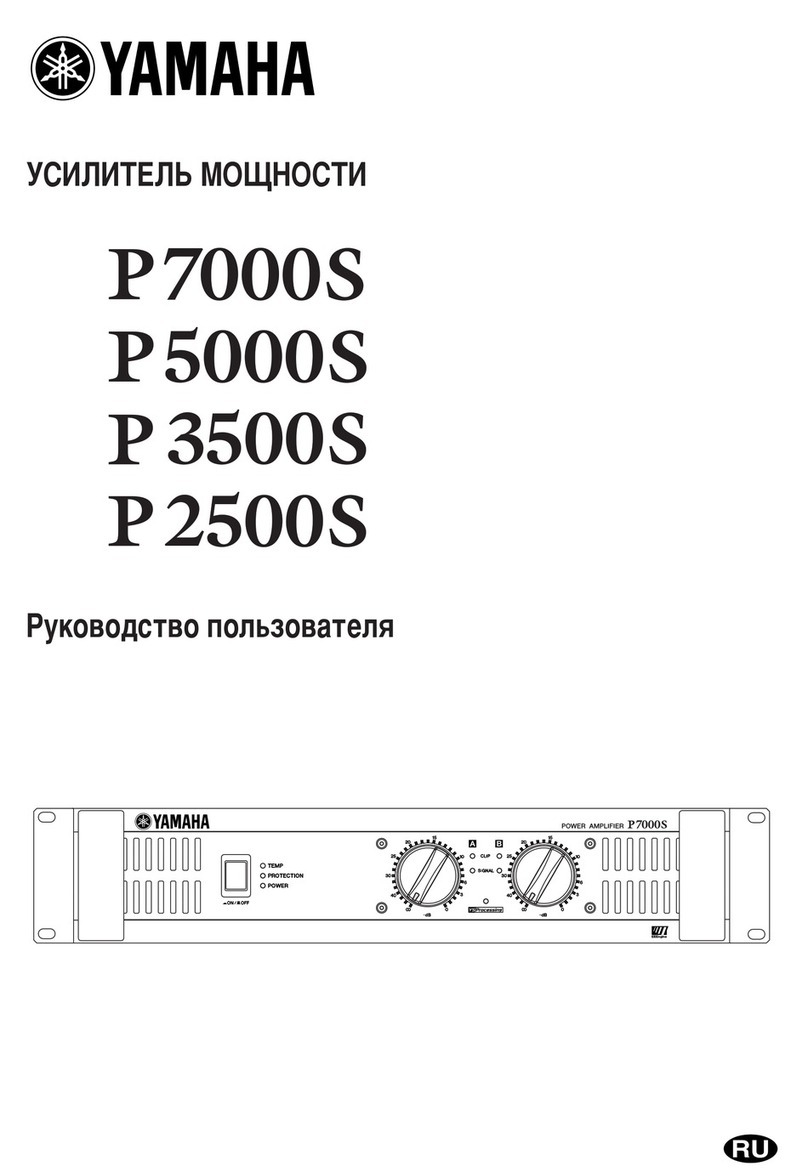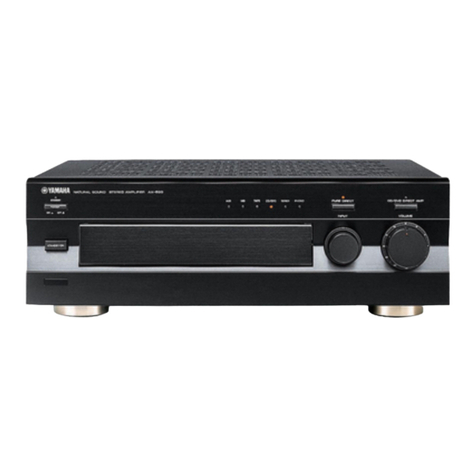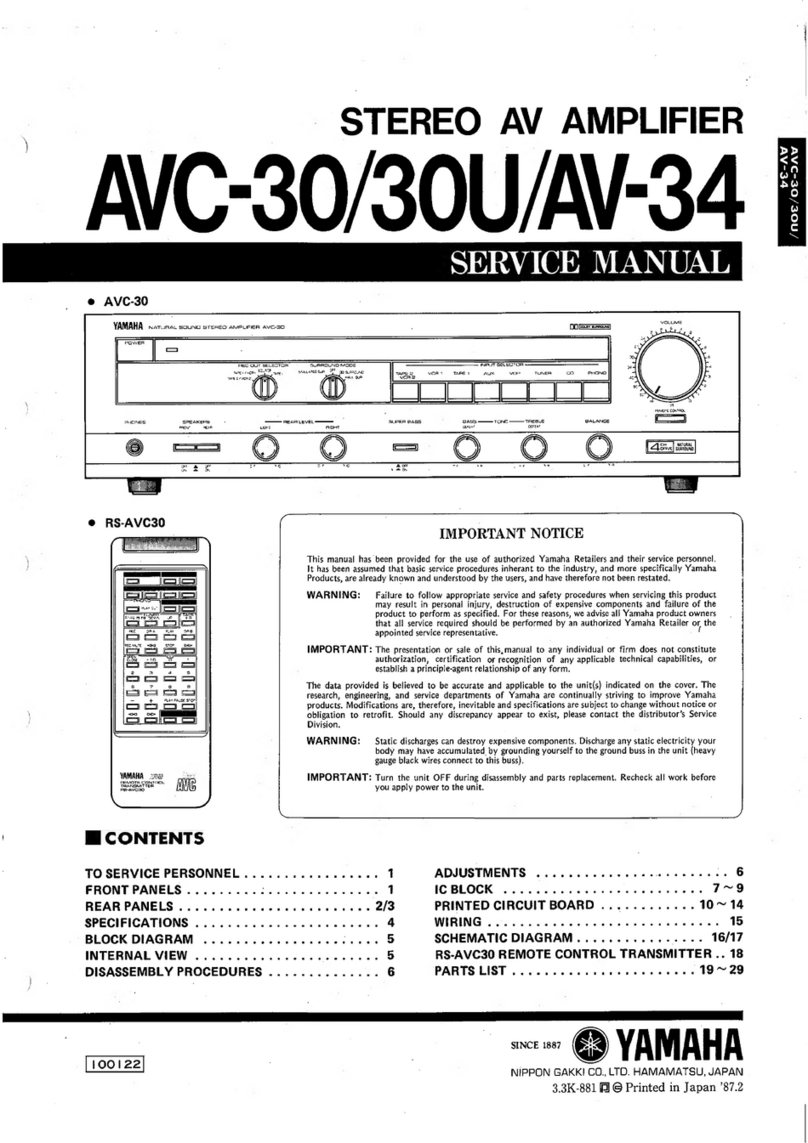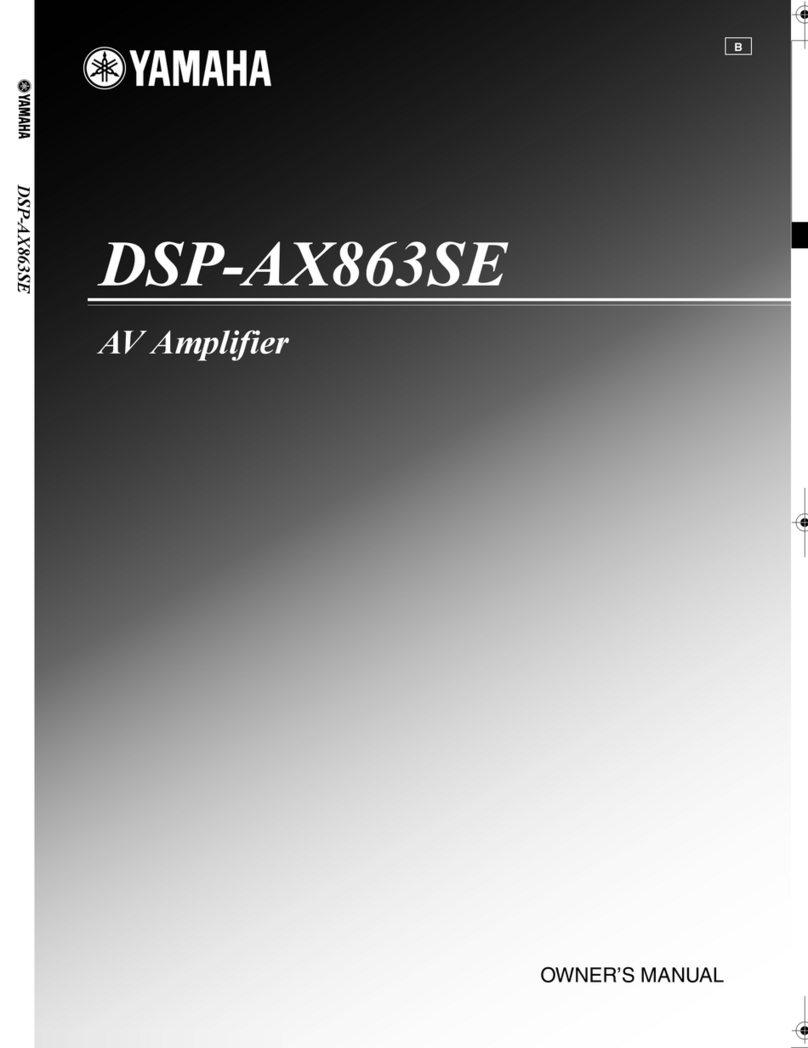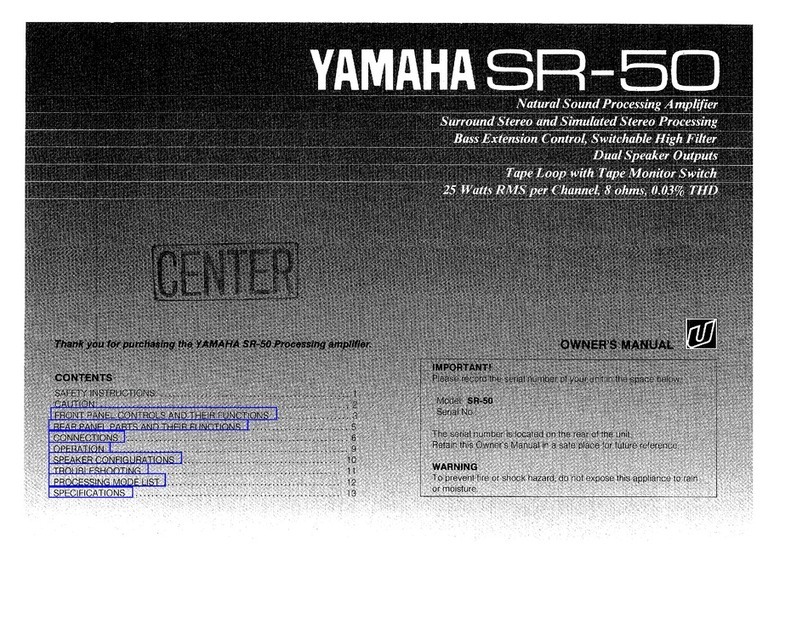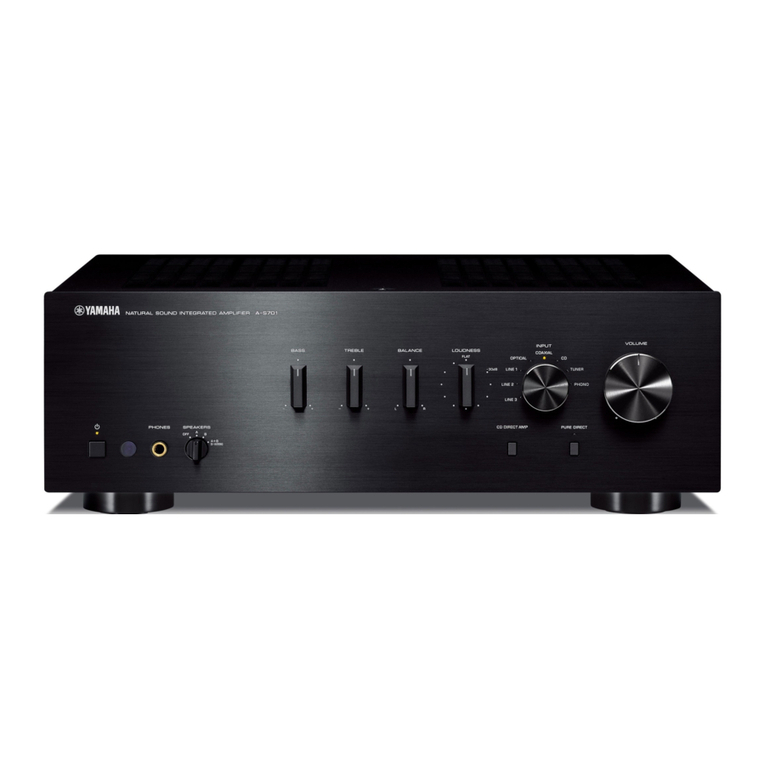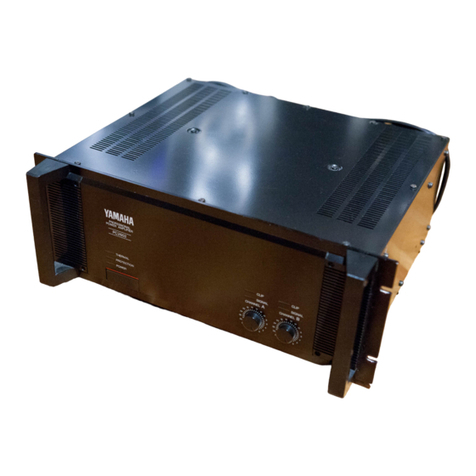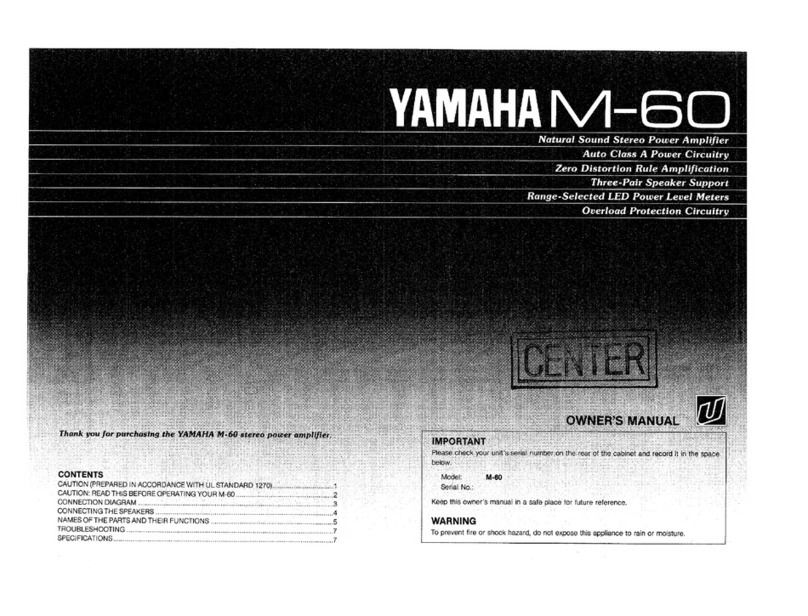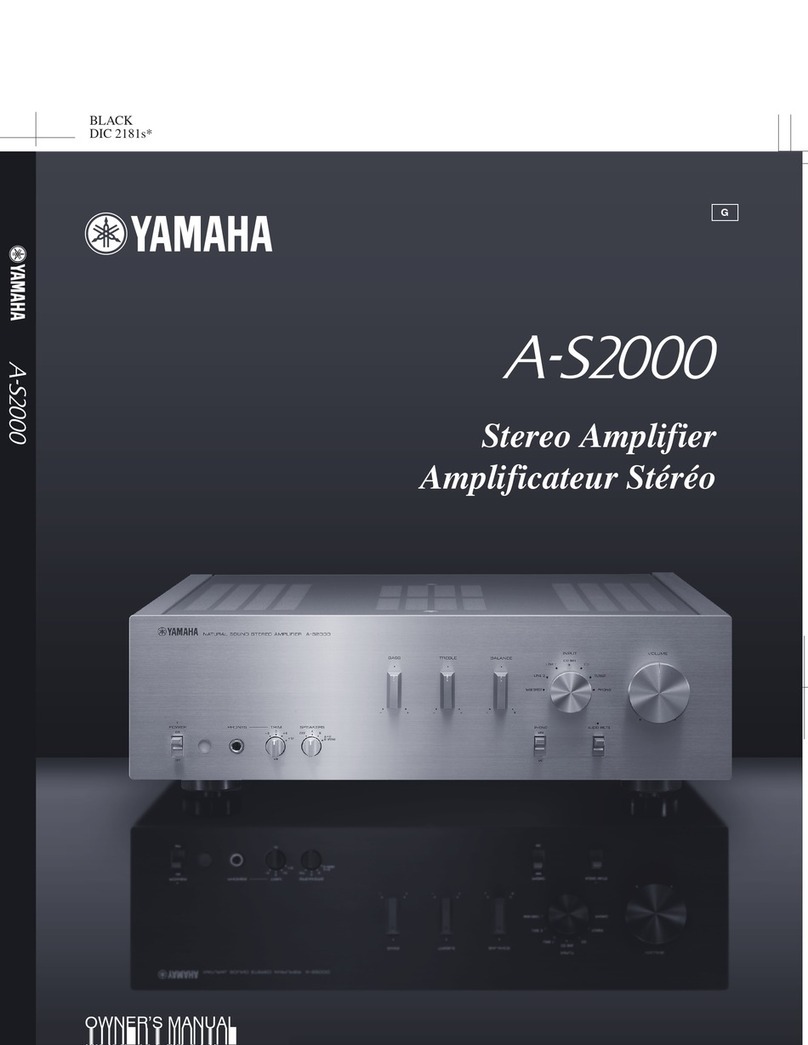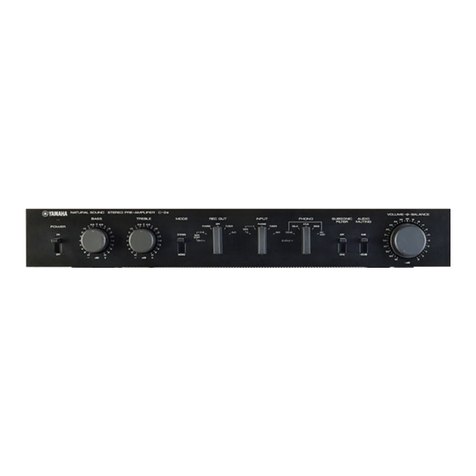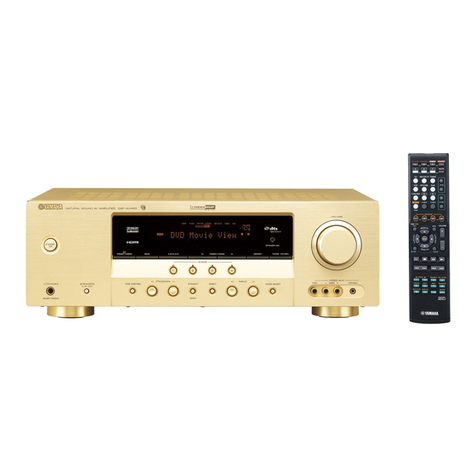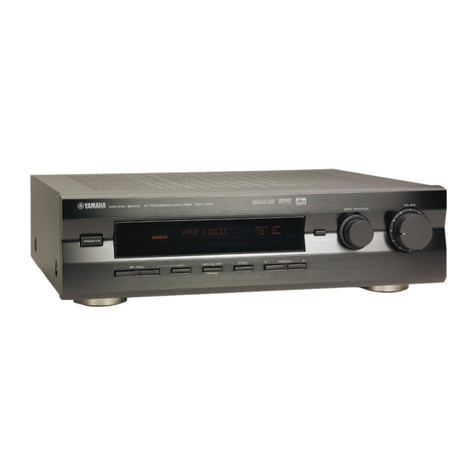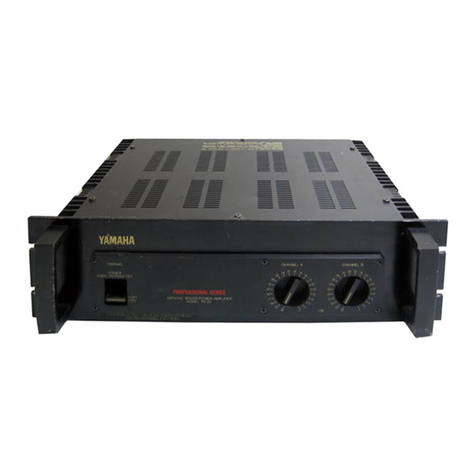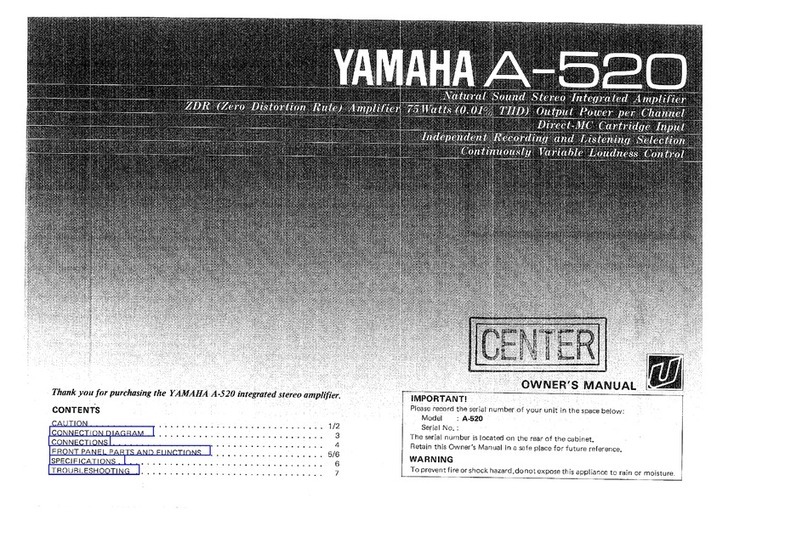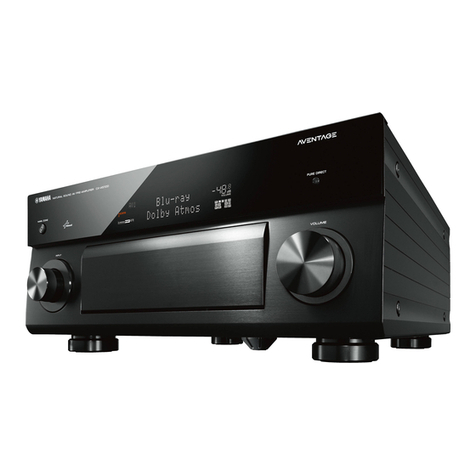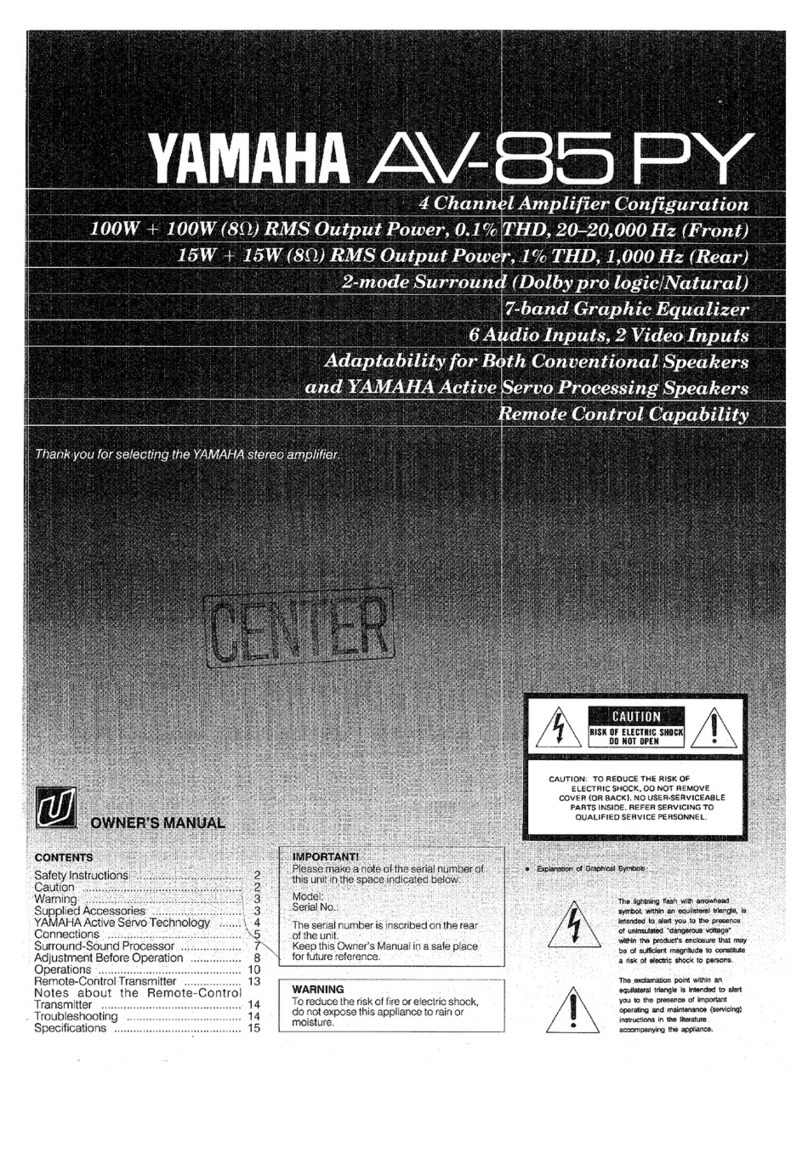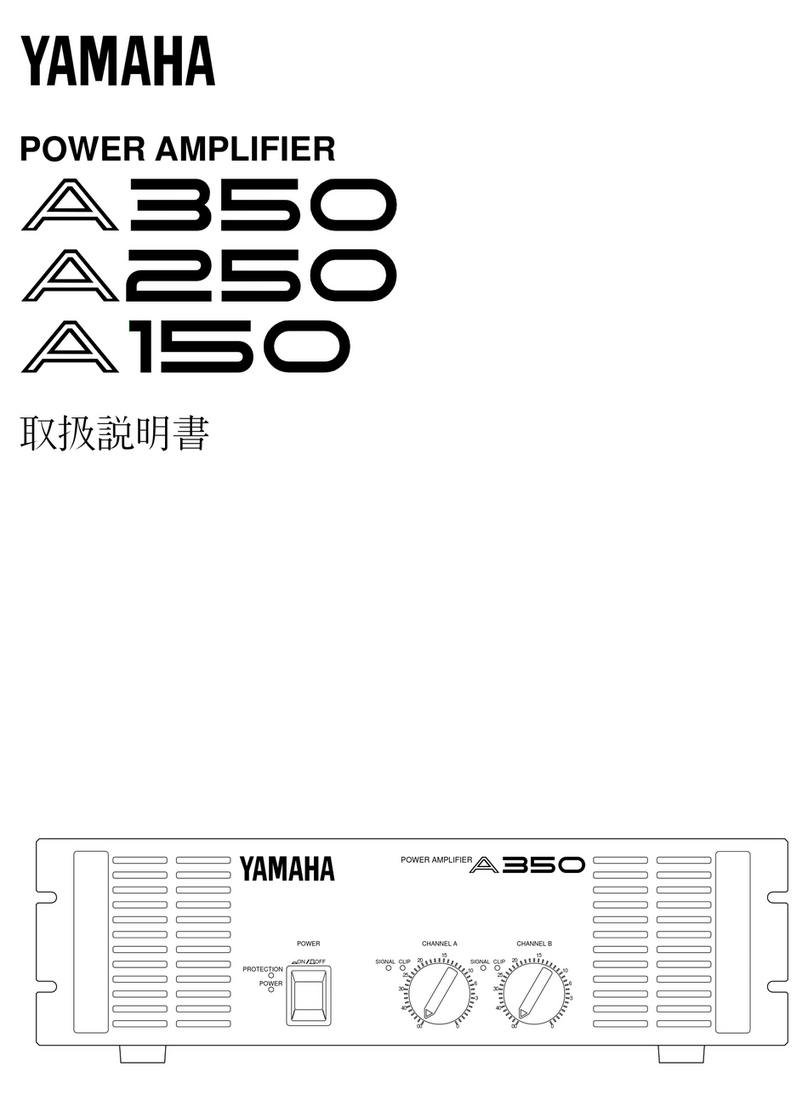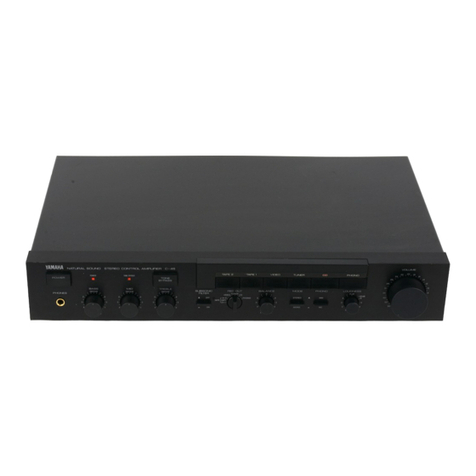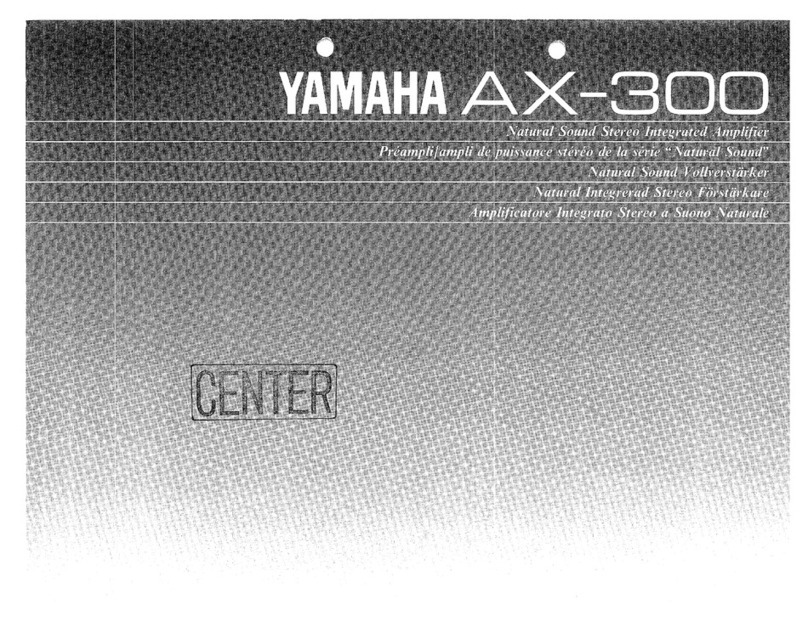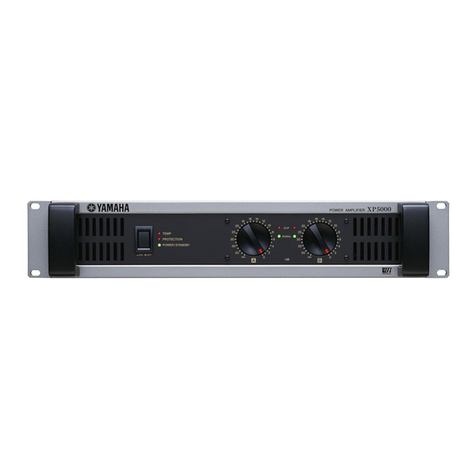
AP-U70
AP-U70
3
■ AUDIO SECTION
Minimum RMS Output Power per Channel
Stereo, 20Hz to 20kHz, 0.8% THD, 6Ω. . . . . 20W+20W
Maximum Power per Channel
Stereo, 1kHz, EIAJ, 10% THD, 6Ω. . . . . . . . . 26W+26W
Input Sensitivity/Impedance
PC, AUX 1, AUX 2 (Analog) . . . . . . . . . . . . 150mV/35kΩ
Maximum Input Signal Level
PC, AUX 1, AUX 2, 1kHz (DSP= THRU) . . . . . . . . . 2.1V
Output Level/Impedance
REC OUT . . . . . . . . . . . . . . . . . . . . . . . . . . . 130mV/2.0kΩ
SUB WOOFER (50Hz) . . . . . . . . . . . . . . . . . . . . . .
2.0V/1.7kΩ
Headphone Jack Rated Output/Impedance
PC Analog Input, etc (1kHz, 150mV) . . . . . . 320mV/61Ω
Frequency Response
USB
20Hz . . . . . . . . . . . . . . . . . . . . . . . . . . . . -1.0+1.0/-1.0dB
1kHz . . . . . . . . . . . . . . . . . . . . . . . . . . . . . . . . . . . . . . 0dB
20kHz . . . . . . . . . . . . . . . . . . . . . . . . . . . -0.5+1.0/-1.0dB
PC, AUX Digital Input
20Hz . . . . . . . . . . . . . . . . . . . . . . . . . . . . -1.0+1.0/-1.0dB
1kHz . . . . . . . . . . . . . . . . . . . . . . . . . . . . . . . . . . . +0/-0dB
20kHz . . . . . . . . . . . . . . . . . . . . . . . . . . . -0.5+1.0/-1.0dB
Total Harmonic Distortion (1kHz, 20k LPF)
USB to SP OUT (4V/6Ω) . . . . . . . . . . . . . . . . . . . . . 0.06%
PC, AUX Digital Input to SP OUT (4V/6Ω) . . . . . . . 0.06%
Signal-to-Noise Ratio (IHF-A-Network)
USB to SP OUT (11V/6Ω) . . . . . . . . . . . . . . . . . . . . . 85dB
PC, AUX Digital Input to SP OUT (11V/6Ω) . . . . . . . 90dB
Residual Noise (IHF-A-Network)
MAIN L/R SP OUT . . . . . . . . . . . . . . . . . . . . . . . . . -68dBV
■SPECIFICATIONS
■GENERAL
Power Supply
U, C models . . . . . . . . . . . . . . . . . . . . . . . AC 120V, 60Hz
A model . . . . . . . . . . . . . . . . . . . . . . . . . . . AC 240V, 50Hz
B, G models . . . . . . . . . . . . . . . . . . . . . . . AC 230V, 50Hz
Power Consumption
U, C, B, G models . . . . . . . . . . . . . . . . . . . . . . . . . . . . 60W
A model . . . . . . . . . . . . . . . . . . . . . . . . . . . . . . . . . . . . 55W
Standby Power Consumption . . . . . . . . . . . . . . . . . . . . . 5W
Dimensions (W x H x D) . . . . . . . . . . . . . 120 x 294 x 355mm
(4-11/16”x 11-9/16”x 13-15/16”)
Weight . . . . . . . . . . . . . . . . . . . . . . . . . . . . 5.5 kg (12 lbs 2oz)
Finish . . . . . . . . . . . . . . . . . . . . . . . . . . . . . . . . . . Silver color
Accessories . . . . . . . . . . . . Remote Control Transmitter x 1
Battery (size "AA", "R06") x 2
USB Cable x 1
CD ROM x 1
* Specifications subject to change without notice.
Manufactured under license from Dolby Laboratories.
"Dolby", "AC-3", "Pro Logic", and the double-D symbol V
are trademarks of Dolby Laboratories. © 1992-1997 Dolby
Laboratories. All rights reserved.
Manufactured under license from Digital Theater Systems,
Inc. US Pat. No. 5,451,942 and other world-wide patents
issued and pending. "DTS", "DTS Digital Surround", are
trademarks of Digital Theater Systems, Inc. copyright
1996 Digital Theater Systems, inc. All rights reserved.
U . . . . . . . . . . USA model
C . . . . . . Canadian model
A . . . . . Australian model
B . . . . . . . . British model
G . . . . . European model
●DIMENSIONS
Units : mm (inch)
120 (4–11/16")
85 (3–5/16")
355 (13–15/16")
253 (9–15/16")
13.5 (1/2")
13 (1/2")
294 (11–9/16")
281 (11–1/16")
283 (11–1/8")
